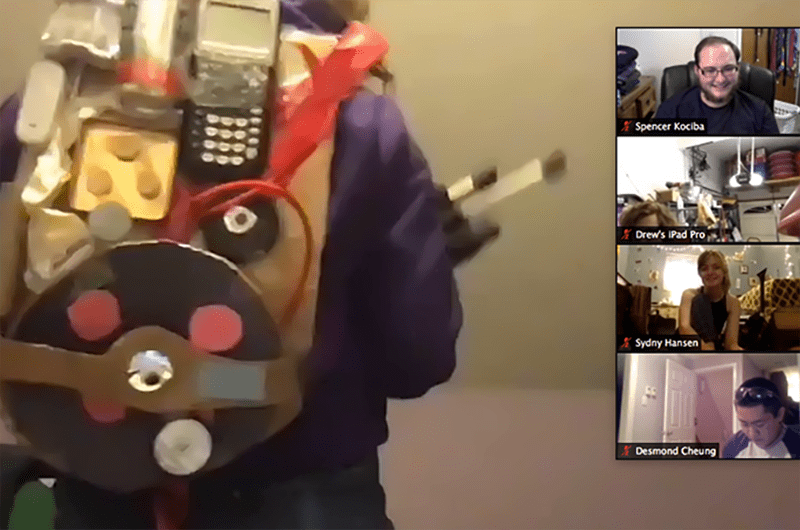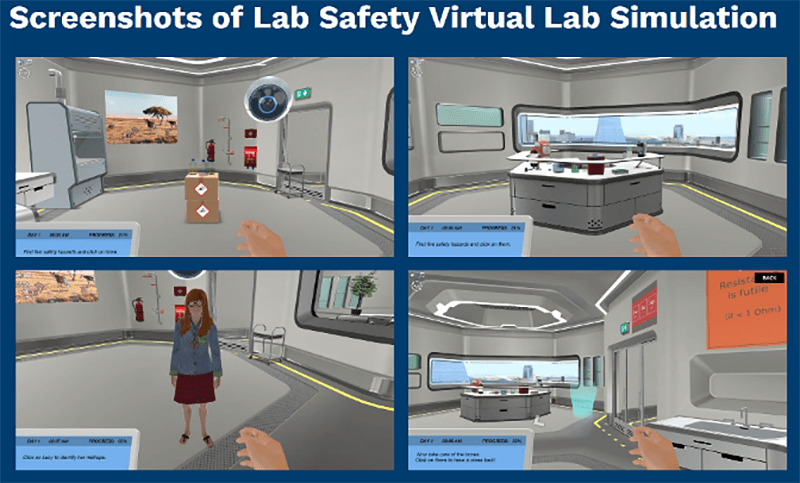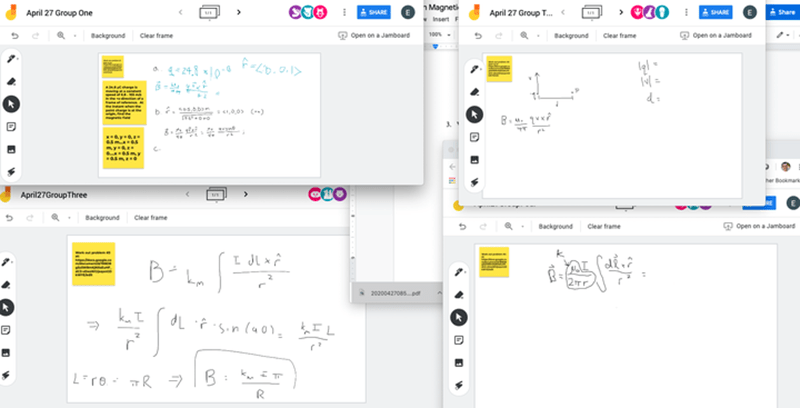How did Drexel Adapt Courses for Remote Teaching and Learning This Spring?

- Own Your Safety in 2026: Simple Steps for a Strong Start
- Drexel Selects New, World-Class Life Sciences Building at 3201 Cuthbert Street for Medical Research Operations
- Turn Happy Places and Memories into a Happy New Year
- Dragons Deliver: Drexel’s Annual Holiday Drives Support Military and Local Families

Please visit the ‘Drexel’s Response to Coronavirus’ website for the latest public health advisories.
It goes without saying that this spring quarter is, and was, unlike anything anyone at Drexel University could have planned for at the beginning of the 2019–2020 academic year — or even the beginning of the winter quarter.
But by early March, when it became clear that the novel coronavirus had the ability to disrupt all aspects of daily life and people’s well-being, Drexel’s administration quickly reacted to the early days of the pandemic by holding final exams online, extending spring break by one week and using the extra time to prepare for 3,200 courses to be taught remotely in the spring quarter.
It’s an understatement to say that was a tremendous undertaking, but it was a tremendous undertaking. The move to remote learning affected many, many people at the University: the students (especially the graduating ones!) who signed up for courses, the faculty who had agreed to teach them and the professional staff (especially those in Drexel Information Technology, or Drexel IT) working to help and support those students and faculty. But all of these Dragons did what Dragons do best: adapt, innovate and be creative.
For the faculty, that meant exploring new ways to explain and showcase the materials, ideas and topics that would still need to be presented to students — but couldn’t be done fact-to-face. That meant doing things that were never done before … or, additionally, things that were never even thought of being done before.
DrexelNow rounded up just a small sampling of how faculty members teaching wildly different classes across the University were able to not just successfully move their courses online for this quarter, but also do so in meaningful ways that might end up being repeated or used later on.
Here’s a look at how some of the Drexel courses and programs were translated for remote teaching and learning this spring:
Bringing the Classroom to Students’ Homes
At first glance, some of the classes seemed impossible to move online, because the learning experiences were tied to the environments in which they were formerly taught: classrooms and labs, yes, but also places off campus, and even outdoors.
For years, College of Nursing & Health Professions Assistant Clinical Professor of Culinary Arts Chef Charles Ziccardi has used Drexel’s garden plot within the Summer Winter Community Garden at 33rd and Race streets to teach “Kitchen Garden” in the spring, summer and fall. Students of all majors taking that class always received a firsthand look at the farm-to-table way of life: gardening, growing produce and learning about the environment and health in relation to food. This term, Ziccardi used and expanded his home garden (four raised beds, fruit trees and potted herbs and vegetables) to use in video instruction, and encouraged students to grow their own gardens, wherever that may be, whatever that might entail. Ziccardi also tended and weeded the plots the class would have used in the community garden, which remained open, and made instructional videos to be shared with students.

As previously written about in DrexelNow, Lewis Colburn, assistant professor in the Department of Art and Art History in the Westphal College of Media Arts & Design, sent “care packages” of blocks of wax, wood, wire and other materials to his students in the “Sculpture I” course, so they would be able to complete projects at home that would be shared and critiqued virtually.
For the Westphal College of Media Arts & Design, students were asked to get creative with what they could find at home to create, or recreate, props (like the Proton Pack from Ghostbusters as in the “Theatre Production” course taught by Mandell Theater Technical Director Chris Totora). Students also were tasked with finding, describing and labeling one example of modern design in their current residence for a shared final project, “The Museum of Where We Are,” in the “History of Modern Design” course taught by Assistant Professor Joseph H. Larnerd.

The College of Engineering shifted its last term of its three-term course sequence for first-year students online, with faculty sending students kits to build everything from watering systems, robotically controlled animatronic puppets, coffee grinders and concrete canoes, depending on the sections. Antonios Kontsos, PhD, who could access Drexel’s campus as essential personnel, 3D-printed student prototype designs that they had created at home using computer-aided design software, and shared the final product with students so they could see how their designs turned out.
Some courses required students to document and reflect on their experiences in journals and portfolios. As previously featured in DrexelNow, students recorded what brought them happiness in journals for a Pennoni Honors College course — called “Happiness” — taught by Athletic Director and Carl R. Pacifico Professor of Neuropsychology Eric Zillmer, PsyD. Every week for six weeks, students in Dornsife School of Public Health Professor Nancy Epstein’s “Arts for Community Health and Wellness” built their own “Arts-in-COVID-Times” portfolio filled with examples of music, theater, photography, poetry and visual arts from across the world dedicated to helping people deal with the pandemic. The students also wrote weekly journal entries reflecting on what they found for their portfolios, as well as what inspired challenged and surprised them. At the end of the quarter, they each presented a curated version of their portfolio and wrote their final journal reflecting on the overall experience.

Normally, students who take the “Literacy and Content Skill Development PreK-8” School of Education course complete a practicum where they gain experience in the field, but Assistant Professor Lori Severino, EdD, couldn’t do that this term. Instead, Severino used contacts and social media to find several preK-4 volunteers to virtually connect with Drexel students, who still could work with experienced teachers and learn what to expect when working with children with special needs
Bringing the Classroom to Students’ Computers (and Phones)
With classes shifted to online, many courses were taught virtually through applications like Zoom. Drexel IT created over 9,000 Zoom accounts in the month or so after the campus shut down, and thousands of online instructional meetings were held over the course of the term. But some professors used other applications to go above and beyond.
A group of biology, chemistry and physics courses in the College of Arts and Sciences all turned to Labster, an online application that can recreate the lab experience virtually. Meshagae Hunte-Brown, PhD, a teaching professor in the Department of Biology, worked with her colleagues as well as professional staff in Drexel IT to buy a license for Labster and implement it to be used by hundreds of students, as well as the professors and graduate student teaching assistants.

The biology courses that used Labster this term were:
- “Essential Biology,” course, taught by Hunte-Brown for both lab and recitation.
- “Cells, Genetics and Physiology Laboratory,” taught by Hunte-Brown and Director of Laboratory Services Matthew McDonald.
- “Cells and Genetics,” taught by Associate Teaching Professor Karen Kabnick, PhD, and Assistant Director of Teaching Laboratories Jenell Black.
- “Physiology and Ecology,” taught by Assistant Teaching Professor Kevin Smith, PhD, and Associate Teaching Professor Monica Togna, PhD.
- “Microbiology for Health Professionals,” taught by Assistant Department Head and Teaching Professor Laura Duwel, PhD and Laboratory Technicians Karlye Jower and Ashley Szyper.
- “Biochemistry Laboratory,” taught by College of Arts and Sciences adjunct Amit Basu and teaching assistant Yemaiza Ojeda-Lassalle, a School of Biomed Engineering, Science & Health Systems biomedical science graduate student.
The chemistry classes taught using Labster this term were:
- “General Chemistry II,” taught by Associate Teaching Professor Craig McClure, PhD; Associate Teaching Professor Anthony Wambsgans, PhD; and Associate Teaching Professor Monica Ilies, PhD.
- “General Chemistry III,” taught by Associate Department Head and Associate Teaching Professor Susan Rutkowsky, PhD; Associate Teaching Professor Anthony Wambsgans, PhD; Adjunct Professor Ann Haftl and Adjunct Professor Frank Marziani.
The Drexel Theatre program and its instructors uploaded students’ work, including those from the “Advanced Improvisation” course, to its YouTube channel. That channel also hosts videos of student-written plays initially developed in the winter term for Teaching Professor Bruce Graham’s “Page to Stage” class and performed by actors from the Theatre program under the direction of Associate Professor Bill Fennelly in the college’s annual New Works Festival; virtual performances of the plays were then recorded over a two-day period in April.
Faculty from the Department of Digital Media used industry-approved programs this term to both prepare students for professional careers and boost collaboration while apart. Assistant Professor Emil Polyak, who teaches “Spatial Data Capture,” developed an application that recorded and uploaded sensor data from students’ phones for reviewing their hand movements, similar to puppeteering. Additionally, Polyak created a simulated learning glass to replicate the experience of communicating through a single window (rather than different screens or media). In her “Digital Compositing” courses, Assistant Professor Nathalie Mathe obtained a license for the remote workflow tool Frame.io, which is widely used in Hollywood and professional studios and was recently used during the pandemic to produce the worldwide “One World: Together at Home” concert in May. Assistant Teaching Professor Daniel Rose held regular playtests using a program called Parsec, which virtualizes local game controllers, for his Digital Media Senior Project team, and used a Discord Server that ameliorated student collaboration and communication within his “Animation: Real-Time Visualization” class.
Creating, and Adapting, Courses for the Quarter — and Researching Online Learning
Drexel faculty rose to the challenge of teaching remotely, some for the first time ever. That quick pivot to remote teaching is being researched by Drexel professors, who also had to pivot themselves. In an extremely short timeframe of just a few weeks, some faculty were even able to create new courses related to COVID-19, establishing a classroom experience with important real-world applications. And after already quickly putting classes online, some faculty continued to adapt even after the semester started, soliciting student feedback to inform how they taught.
The College of Engineering’s LD Betz Professor of Environmental Engineering and Department Head of Civil, Architectural and Environmental Engineering Charles Haas, PhD, wasn’t even scheduled to teach this quarter. But he was so moved by current events that he quickly put together a course called “Coronavirus and Engineering” that covered how engineering applications and skills could be used to better understand the virus (like how it can be transmitted or prevented from transmitting via masks and indoor ventilation).
Mira Olson, PhD, associate professor in the Department of Civil, Architectural, and Environmental Engineering in the College of Engineering, taught a community-based design course this term that evaluated and partnered with organizations connecting engineers to COVID-related projects.

In the Dornsife School of Public Health’s “Health Management and Policy II” course, Clinical Professor and Interim Chair of the Department of Health Management and Policy Jim Buehler, MD, fielded a two-question survey to the students in Week 3 asking what was working well in the class and what could be improved, which impacted how the rest of the course was taught.
Eric Brewe, PhD, an associate professor of physics and science education in the College of Arts and Sciences, was awarded a $72,000 grant from the National Sciences Foundation for a project, titled “Faculty Social Networks Supporting Crisis Transitions to Online Physics Teaching,” to survey physics faculty across the country on how they transitioned to online education due to COVID-19. He has also been blogging about his experiences this term teaching “Contemporary Physics III.”
Kristy Kelly, PhD, assistant clinical professor in the School of Education, worked with graduate students to design a study on the experiences of K-12 educators around the world as they transitioned to remote and online teaching during the COVID-19 pandemic.
Faculty and staff from the College of Nursing and Health Professions compared new online educational platforms in telemedicine and telehealth to prior methods and standards used with faculty, staff, patients and subjects.
Faculty Come Together to Share and Prepare for Remote Teaching
As they prepared to teach apart and hold digital courses and staff meetings, faculty still came together to share tips, offer advice and help each other get ready for the spring term. Faculty were aided by professional staff from all across the University, including Drexel Libraries and Drexel Information Technology, who spent weeks working diligently to provide support and offer resources. The Libraries saw an incredible increase in course reserves requests, and the Instructional Technology Group handled about the same increase in tickets.
Drexel’s Teaching and Learning Center (TLC) held several remote-teaching workshops that were attended by more than 250 different faculty in the two weeks before the spring term began (for reference, that same amount of faculty had participated in TLC workshops between August-February).
The Online Learning Council (OLC) Faculty Fellows saw even greater participation, with 453 faculty, staff and graduate student attendees in their eight workshops from March 18–27, including:
- “Remote Teaching: The Fundamentals,” presented by College of Arts and Sciences Teaching Professor of English and OLC Faculty Fellows Chair Deirdre McMahon, PhD.
- “Maintaining Faculty Presence,” presented by College of Nursing and Health Professions Associate Clinical Professor Joanne Serembus, EdD.
- “Balancing Synchronous and Asynchronous Options,” presented by College of Nursing and Health Professions Professor Jonathan Deutsch, PhD.
- “Three Forms of Student Engagement,” presented by College of Arts and Sciences Teaching Professor of English Kenneth Bingham.
- “Creative Discussion Boards,” presented by Serembus.
- “Strategies for Assessment,” presented by College of Nursing and Health ProfessionsDirector of Innovative Course Design and Technological Infusion and Associate Clinical Professor Dana Kemery, EdD.
- “Providing Effective Feedback,” presented by Kemery.
- “Implementing the Quality Matters Emergency Remote Instruction Checklist,” presented by McMahon.
The Remote Teaching Task Force — chaired by Senior Vice Provost of Faculty Affairs Erin McNamara Horvat, PhD; LeBow College of Business Director of Instructional Technology Alan Hecht; and Drexel IT Director of Instructional Technology Michael Shelmet — curated recordings of these workshops and other resources for faculty pedagogical support in the Remote Teaching SharePoint site.
The University Writing Program — through director Scott Warnock, PhD, a professor of English in the College of Arts and Sciences, and associate director Dan Driscoll, teaching professor of English and co-director of the minor in writing in the College of Arts and Sciences — supported remote writing instruction to faculty this term by offering consultations on migrating writing courses online and teaching specific writing-related aspects of their courses in digital formats.
Before the term, the Westphal College of Media Arts & Design’s Department of Cinema & Television’s Program Director Tom Quinn helped faculty from the Department of Design learn about the best camera angles and lighting to use when teaching virtually (like showcasing sewing demonstrations).
Online Master’s in Arts Administration & Museum Leadership Program Director Laura-Edythe Coleman counseled over 24 Westphal College of Media Arts & Design faculty colleagues in individual strategy sessions for teaching online, and led two online learning bootcamp sessions for graduate students. Adjunct instructor Rick Perkins, who normally teaches "Financial Accounting for Nonprofit Organizations," spent countless hours working as a peer mentor to faculty.
In This Article
Drexel News is produced by
University Marketing and Communications.
